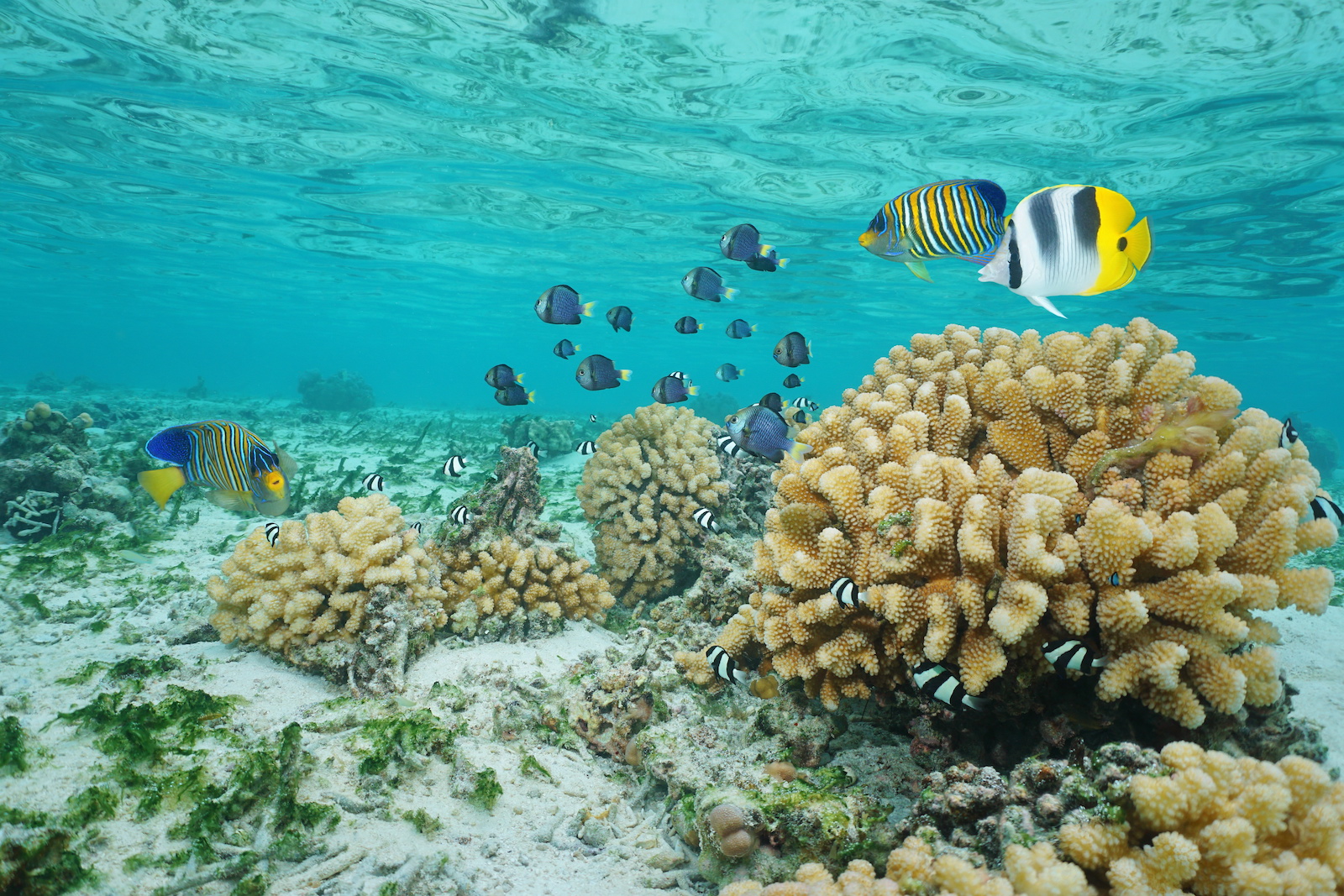This story was originally published by Hakai Magazine and is reproduced here as part of the Climate Desk collaboration.
At the beginning of 2019, mass bleaching devastated coral reefs around the French Polynesian island of Moorea, affecting more than 80 percent of Acropora coral in some areas. Just a few months later, marine biologists noticed that some of the bleached coral colonies seemed to have bounced back. By October 2019, they had regained their colorful algal symbionts and appeared completely healthy.
But as the adage goes, looks can be deceiving.
In a new paper, scientists led by Sarah Leinbach, a graduate student at Auburn University in Alabama, show that even though the bleached coral colonies had a seemingly miraculous superficial recovery, they had lower energy stores and were producing fewer eggs than their unbleached counterparts.
Corals bleach when they expel the symbiotic algae that live in their cells, which provide them with food. “They’re losing these minuscule food factories that live in their tissues,” explains Leinbach. This forces the corals to draw from their energy stores to survive—energy they might otherwise use for reproduction.
Leinbach and her colleagues don’t know how much longer these energetic and reproductive effects will last, though the group is dedicated to figuring it out. They completed follow-up surveys in November 2021 and are analyzing that data now.
Jacqueline Padilla-Gamiño, a marine biologist at the University of Washington who was not involved in the research, says this study’s strength is that it looked at how the coral colonies were faring months after the bleaching took place rather than measuring the immediate aftermath. “Sometimes it’s really hard to get a big picture on what it really takes for the corals to recover, and what is the impact on the future generations,” says Padilla-Gamiño. “I will be super interested to see what happened after two years.”
While this new study is concerning because it shows the lingering effects of bleaching on Acropora coral, it doesn’t mean all coral species experience bleaching the same way. In fact, in her own research in Hawai‘i, Padilla-Gamiño has found no effect of bleaching on the reproduction of a different coral species, Montipora capitata. Padilla-Gamiño and her colleagues are still trying to figure out exactly how Montipora coral finds the energy to maintain egg production when other species cannot.
These disparate consequences of bleaching illustrate how difficult it is to forecast how coral reefs will be affected by climate change.
Coral bleaching is a huge threat to coral reef ecosystems worldwide. While the term may conjure images of permanent underwater wastelands, “it’s not actually like that,” says Leinbach. “There’s a lot of variation.” Although severe bleaching does kill large swaths of corals, some can survive with seemingly no ill effects. Others can recover, but pay steep and potentially long-lasting costs.
“I think that’s something really important that our study is showing,” she adds. “That’s something that has to be taken into account if you want to project into the future.”



